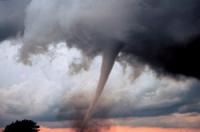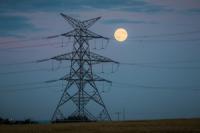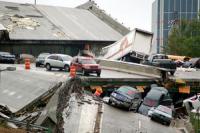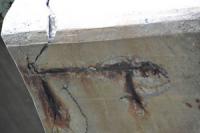-
Tornado damage impact could triple in coming decades

Tornadoes are one of the most unpredictable weather phenomena on Earth. Each year the United States, home to more tornadoes than any other country, sustains billions of dollars of damage, death, injuries, and disruption from the violent storms. Scientists say that the potential for annual tornado impact magnitude and disaster could triple by the end of the twenty-first century.
-
-
New funding enables work on Internet policy and cybersecurity for key infrastructure
MIT’s cross-disciplinary Internet Policy Research Initiative (IPRI) announced that it has awarded $1.5 million to a select group of principal investigators for early-stage Internet policy and cybersecurity research projects. “Understanding the nuance of cybersecurity risk in our critical infrastructure will help policymakers assure that the proper incentives are in place to reduce the threat of catastrophic attacks,” says IPRI founding director Daniel Weitzner.
-
-
New tool could help predict, prevent surging waters in flood plains
A group of international scientists studying China’s Yellow River has created a new tool that could help officials better predict and prevent its all-too-frequent floods, which threaten as many as eighty million people. The tool — a formula to calculate sediment transport — may also be applied to studying the sustainability of eroding coastlines worldwide.
-
-
Helping power utilities and others better plan for the future
If you’re an electric utility planning a new power plant by a river, it would be nice to know what that river will look like twenty years down the road. Will it be so high that it might flood the new facility? Will the water be so low that it can’t be used to cool the plant? Generally, such projections have been based on records of past precipitation, temperature, flooding and other historical data. But in an era when temperature and precipitation are changing rapidly, historical patterns won’t do you much good. A new initiative by the U.S. Department of Energy’s (DOE) Argonne National Laboratory combines climate data and analysis with infrastructure planning and decision support, promises real help.
-
-
Solar power to reduce national security risks in the U.S. power grid
Vulnerabilities in the power grid are one of the most prevalent national security threats. The technical community has called for building up the resiliency of the grid using distributed energy and microgrids for stabilization. Power production from multiple sources increases the difficulty of triggering cascading blackouts, and following an attack or natural disaster, microgrids can provide localized energy security. Distributed microgrid tech can secure the electrical grids at military bases to reduce the impact of cyberattacks, physical attacks from terrorists, and natural disasters.
-
-
Quickly detecting structural problems in bridges, dams
Today, there is great interest in using distributed sensors to continually monitor the structural health of large structures such as dams or bridges. With one million sensing points, a newly developed fiber optic distributed sensor could offer significantly faster detection of structural problems than is currently available.
-
-
Upgrading the U.S. grid

As society moves toward an increasingly connected world, keeping the U.S. electrical grid reliable and safe from hackers and other potential security threats has perhaps never been more crucial. The Department of Energy’s Grid Modernization Initiative aims to deliver fundamental knowledge, new concepts, tools and data to support the nation’s journey to modernizing the electric power system infrastructure. Enhanced grid security, grid flexibility via energy storage and improved economic competitiveness are key outcomes of this initiative.
-
-
Dangerous mix: Climate change, tornadoes, and mobile homes
Tornadoes and mobile homes do not mix to begin with, but throw in the volatility of climate change and the potential for massive property damage and deaths is even higher in coming decades. The number of mobile homes in the United States has risen dramatically in the past 60 years, to about 9 million currently. Meanwhile, the United States is the most tornado-prone country in the world, with an average of 1,200 twisters per year.
-
-
Trade-offs between short- and long-term policies dealing with greenhouse gases
Scientists and policymakers use measurements like global warming potential to compare how varying greenhouse gases, like carbon dioxide and methane, contribute to climate change. Yet, despite its widespread use, global warming potential fails to provide an accurate look at how greenhouse gases affect the environment in the short and long-term, according to researchers. The researchers argue that because global warming potential calculates the warming effects of greenhouse gases over 100 years, they discount the effects of any greenhouse gas that disappears from the atmosphere after a decade or two. This masks the trade-offs between short- and long-term policies at the heart of today’s political and ethical debates.
-
-
Water-repelling, long-lasting concrete could make potholes disappear
Water is concrete’s ultimate enemy. Although concrete withstands constant beatings from cars and trucks, water can break it down, pooling on its surface and infiltrating the tiniest cracks. Add freezing and thawing cycles, and it is no wonder roads need frequent repairs. To keep Mother Nature out, researchers have created a water-repelling concrete. The concrete is not only water-repellent – it isdesigned to have a service life of up to 120 years.
-
-
Natural flood-prevention measures valuable, but not “a silver bullet”
Natural measures to manage flooding from rivers can play a valuable role in flood prevention, but a lack of monitoring means their true potential remains unclear, researchers say. Such measures, including river restoration and tree planting, aim to restore processes that have been affected by human activities such as farming, land management and house-building.
-
-
Louisiana’s westernmost, low-lying regions on track to drown under sea level rise
Without major efforts to rebuild Louisiana’s wetlands, which serve as bulwarks against waves and rising seas, the state’s coast has little chance of withstanding the accelerating rate of sea level rise, a new study concludes. Wetlands can provide crucial protection from rising seas, especially in Louisiana’s low-lying westernmost areas, but the habitats have faced years of decline, mostly from coastal erosion. The erosion results in part from levees that have been built along the Mississippi River. The levees block mud deposits that flow to and underlie much of the Louisiana coast. The land, cut off from new building material, begins to sink.
-
-
Risk of collapse: U.S. bridges more vulnerable than previously thought

The United States is considering a $1 trillion budget proposal to update infrastructure, including its crumbling bridges. An obstacle to spending the money wisely is that the current means of assessing bridges may underestimate their vulnerability. Studying how and why bridges have collapsed in the past identifies the limitation of current risk assessment approach and demonstrates the value of new perspectives on climate change impact.
-
-
Extreme space weather hazardous to U.S. economy, national security

While major geomagnetic storms are rare, with only a few recorded per century, there is significant potential for large-scale impacts when they do occur. Extreme space weather can be viewed as hazards for the economy and national security. A rare but powerful magnetic superstorm could cause continent-wide loss of electricity and substantial damage to power-grid infrastructure that could persist for months and cost the Nation in excess of $1 trillion.
-
-
“Spectral fingerprinting” sees through concrete to detect early corrosion

Doctors use X-ray, CT scan, or MRI to determine whether a patient has suffered any internal injuries. Researchers are using the same principle, but in a more powerful form, to detect corrosion, the primary danger threatening the health of the steel framework within the nation’s bridges, roads, and other aging physical infrastructure. What they have developed is a noninvasive “spectral fingerprint” technique that reveals the corrosion of concrete-encased steel before it can cause any significant degradation of the structure it supports.
-
- All
- Regional
- Water
- Biometrics
- Borders/Immig
- Business
- Cybersecurity
- Detection
- Disasters
- Government
- Infrastructure
- International
- Public health
- Public Safety
- Communication interoperabillity
- Emergency services
- Emergency medical services
- Fire
- First response
- IEDs
- Law Enforcement
- Law Enforcement Technology
- Military technology
- Nonlethal weapons
- Nuclear weapons
- Personal protection equipment
- Police
- Notification /alert systems
- Situational awareness
- Weapons systems
- Sci-Tech
- Sector Reports
- Surveillance
- Transportation
Advertising & Marketing: advertise@newswirepubs.com
Editorial: editor@newswirepubs.com
General: info@newswirepubs.com
2010-2011 © News Wire Publications, LLC News Wire Publications, LLC
220 Old Country Road | Suite 200 | Mineola | New York | 11501
Permissions and Policies
Editorial: editor@newswirepubs.com
General: info@newswirepubs.com
2010-2011 © News Wire Publications, LLC News Wire Publications, LLC
220 Old Country Road | Suite 200 | Mineola | New York | 11501
Permissions and Policies
